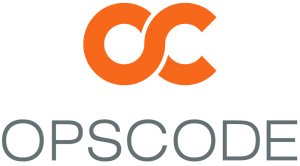Ryan Holmes, the CEO of Vancouver social media startup HootSuite, wrote a column in today’s Financial Post entitled “Why Canada is failing at tech“. Holmes basically asserts that Canadians are “failing” at technology because the country isn’t graduating enough computer science and engineering talent to fill the available job openings. I don’t think Holmes has gone deep enough in his analysis. Why aren’t many people choosing computer science and engineering as career paths and the “jobs of tomorrow”? The answer to the question, I think, is pretty simple: it’s actually not a very nice job being a software developer. Continue reading
Information Technology
There are 212 posts filed in Information Technology (this is page 3 of 22).
Chef Cookbook Testing and Continuous Integration
I’ve been really busy working with our customers on becoming better Chefs, but I was recently invited by Kevin Karwaski of the Chef-Boston meetup group to give a presentation on the state of Chef cookbook testing today. Here are my slides: I hope the video will be up soon.
By the way, I renamed the demonstration cookbook from “sauceproxy” to “sauceconnect” in preparation for uploading it to the community site. Having unit and acceptance tests that I could run — both manually and via Travis — to verify that I’d done the search-and-replace properly really helped!
Technology Preview: Chef Cookbook integration testing with Test Kitchen 1.0
How do you test your Chef cookbooks without firing up a real machine and uploading the recipes to a Chef Server?
I get asked this question all the time, especially after I’ve taught the basics of Chef at Opscode’s public training classes. For unit testing, there is ChefSpec — RSpec plus Chef primitives to allow you to make assertions about your recipes. However, that only goes so far without actually converging a real node & running external tests on the services that were configured.
Last year, Opscode released Test Kitchen, allowing you to use workstation-based virtualization (in the form of VirtualBox) to fire up test nodes, converge them, and run Minitests and Cucumber behavioural-driven development (BDD) tests on them after the converge. In this article, I’ll show you how to set up Test Kitchen 1.0 with Vagrant 1.1 to write and run integration tests.
Reviving veewee after Vagrant 1.1
Recently, Mitchell Hashimoto released a major rewrite of Vagrant, the tool that lets you build, provision, and rebuild virtualized development environments at the click of a button. While the rewrite is great — it has many new features, chief amongst them the ability to use virtualization providers other than VirtualBox — it was a major architectural change, and this broke many tools that work with Vagrant. One of them is veewee, a popular tool from Patrick Debois that allows anyone to rebuild fresh Vagrant boxes. Here’s how I fixed my veewee installation for now. Continue reading
I’m joining Opscode!
 Tomorrow I’ll be joining Opscode as a senior consultant for Chef. My job responsibilities will be diverse, encompassing training, evangelism, and also working on projects for customers large and small.
Tomorrow I’ll be joining Opscode as a senior consultant for Chef. My job responsibilities will be diverse, encompassing training, evangelism, and also working on projects for customers large and small.
I’m extremely excited to be working for a company whose product has been revolutionizing the job responsibilities of the traditional system administrator, and even those of the software engineer. It’s easier to break down the walls between operations and development when all your infrastructure is code, and Chef makes that a no-brainer. Frankly, it’s also more fun for everyone — yes, it’s possible for web operations to be fun again, just like it was back in 1996 when I got into this sort of thing.
I’m looking forward to working with all of the really smart people at Opscode, and, if you’re part of the Chef community, with you as well. See you around, maybe at a conference, training session, or just in IRC!
What Your CDN Won’t Tell You: Optimizing a News Website for Speed and Stability
I was recently in San Diego giving a talk at LISA ’12 entitled “What Your CDN Won’t Tell You: Optimizing a News Website for Speed and Stability“. The paper was based on work my colleague Blake Crosby and I did at the Canadian Broadcasting Corporation to rearchitect their website & integrate it successfully with Akamai‘s EdgeSuite content delivery network, enabling it to serve over a million unique visitors daily with high availability.
I’m pleased to announce that the slides from the presentation are now available, and the video (eek!) will be shortly.
Hope everyone’s having a great holiday and I promise there will be more blog posts in the New Year.
An Introduction to Shef, the Chef Shell
Earlier this week I gave a talk at the Chef-NYC meetup about Shef, the Chef Shell. Although it was more of an interactive demo rather than a traditional presentation, I’ve put the slides up nonetheless.
I’ve also been meaning to post some notes from the 2012 Surge Conference that I attended at the end of September. Haven’t had much of a chance to write those up into something coherent, but I will soon. Meanwhile, check out the videos, which have just been posted.
Finally, I will be at DevOpsDays in a couple weeks — though not speaking. If you’re going, I’m looking forward to meeting you!
Setting up a DNS Server in Amazon EC2
I’ve written a new post for the SecondMarket Engineering blog about our experiences setting up our own DNS servers in Amazon EC2. You can read it at engineering.secondmarket.com.
Implementing Jetty Session Persistence in MongoDB
At SecondMarket, we’re moving towards a development model where not only are the deployments continuous but where deploys incur no downtime. Users should not notice if we take a portion of our servers out for maintenance, even if they’re logged into the site and have an active session. We decided to tackle this problem by persisting Java sessions to external storage. This allows another Jetty to take over serving of existing sessions if we decide to take down a Jetty for maintenance. Continue reading
Continuous Deployment with a $10 USB Button
I ‘ve been very busy at my job in system operations over at SecondMarket, trying to get our infrastructure in shape for many changes coming down the pipe. On the business side, the JOBS Act passed by Congress back in April means that the ban on general solicitation of accredited investors is being lifted, and so we expect to be able to grow our client base as a result.
‘ve been very busy at my job in system operations over at SecondMarket, trying to get our infrastructure in shape for many changes coming down the pipe. On the business side, the JOBS Act passed by Congress back in April means that the ban on general solicitation of accredited investors is being lifted, and so we expect to be able to grow our client base as a result.
More clients means more features needed to cater to them. On the technology side we have been working hard to deliver small packages of features faster, rather than in one large biweekly release: in other words, continuous delivery. I’m looking forward to the day when we can finally hand over the keys to engineering & have developers deploy whenever they want, using our Jenkins continuous integration system. Operations people have no business being a roadblock to software developers who want to get features out the door as quickly as possible. As long as the code is of high quality and doesn’t crash the servers, I’m comfortable with whatever gets deployed into production. It also means that engineers are 100% responsible for both the success and failure of their code — a simultaneous carrot & stick towards increasing quality.
The whole discussion around push-button deploys has led us purchasing an actual USB pushbutton. Made by a company called Dream Cheeky, this button — admittedly a little more flimsy than it appears in the picture — ships with only a Windows driver. Fortunately, someone has written a RubyGem and a Mac driver to interface with it. We’re taking the next logical step and making it possible to deploy with literally a button push. Continue reading
